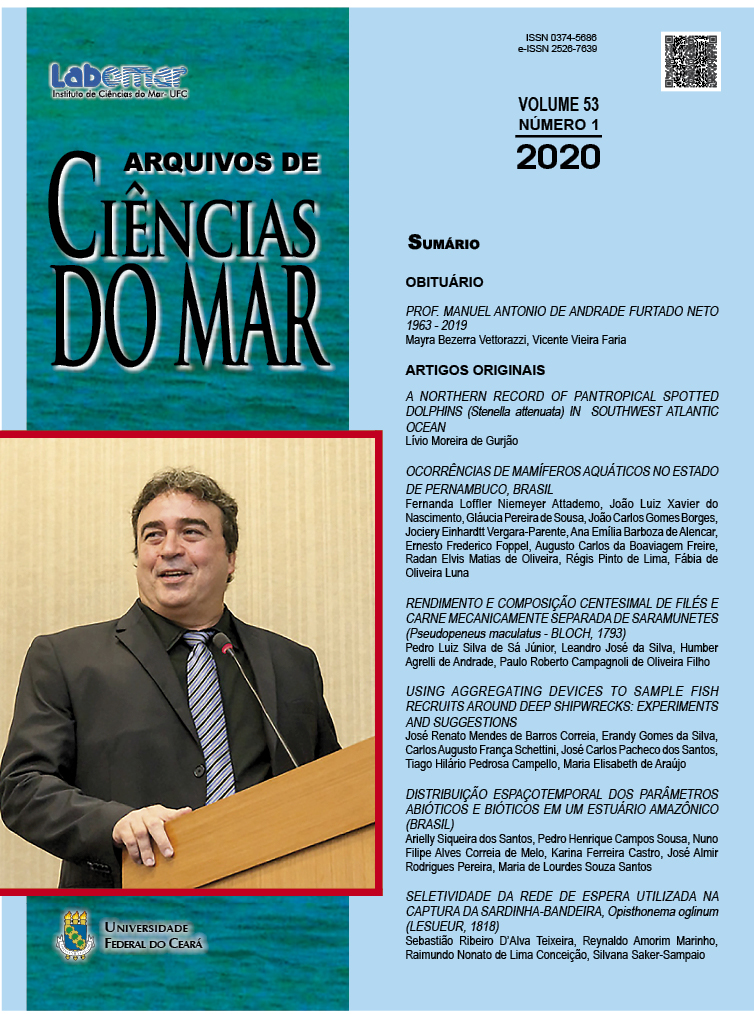Occurrences of aquatic mammals in the State of Pernambuco, Brazil
Marine Mammals, Pernambuco, Brazil
DOI:
https://doi.org/10.32360/acmar.v53i1.43288Abstract
Aquatic mammals occur throughout the Brazil territory. However, until now there are no
descriptions of the species that occur in the coast of Pernambuco State. Stranding assistance is an
important tool for the record of aquatic mammal species and for obtaining information about
populations and their respective threats. This study aimed to describe the occurrence, diversity and
distribution of aquatic mammals in Pernambuco State, Brazil. The knowledge acquired came from the
database from institutions within the Northeast Marine Mammals Stranding Network (REMANE)
that acted in the state between 1984 and 2015, contemplating live and dead animals. A number of 157
stranding events were recorded in Pernambuco State, corresponding to 18 aquatic mammal species.
Sotalia guianensis was the most abundant species (28,7%), followed by Tursiops truncatus
(17,2%) and Trichechus manatus (9,6%). The presence of threatened and migratory species was
identified, being the anthropic activities the biggest threat. Recife counties and the Olinda County
presented itself as discontinued area of the marine manatee; however, this study showed the occurrence
of native animals in these localities. Systematized assistance to stranding and educational campaigns
are essentials to guarantee the conservations of these species in Pernambuco.
Downloads
Downloads
Published
How to Cite
Issue
Section
License
1. Proposta de Política para Periódicos de Acesso Livre
Autores que publicam nesta revista concordam com os seguintes termos:
- Autores mantém os direitos autorais e concedem à revista o direito de primeira publicação, com o trabalho simultaneamente licenciado sob a Licença Creative Commons Attribution que permite o compartilhamento do trabalho com reconhecimento da autoria e publicação inicial nesta revista.
- Autores têm autorização para assumir contratos adicionais separadamente, para distribuição não-exclusiva da versão do trabalho publicada nesta revista (ex.: publicar em repositório institucional ou como capítulo de livro), com reconhecimento de autoria e publicação inicial nesta revista.
- Autores têm permissão e são estimulados a publicar e distribuir seu trabalho online (ex.: em repositórios institucionais ou na sua página pessoal) a qualquer ponto antes ou durante o processo editorial, já que isso pode gerar alterações produtivas, bem como aumentar o impacto e a citação do trabalho publicado (Veja O Efeito do Acesso Livre).

